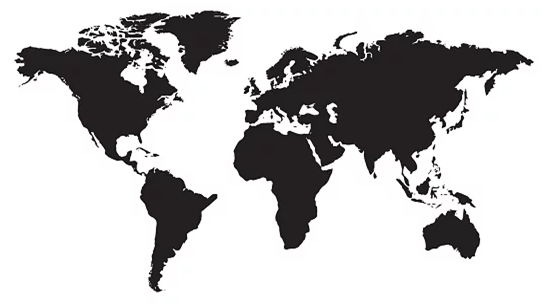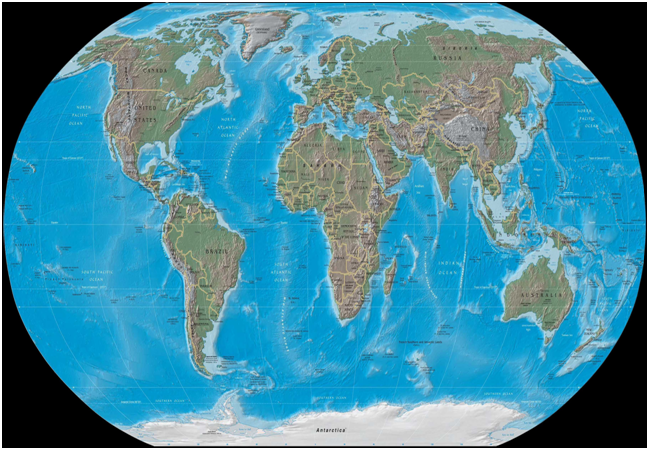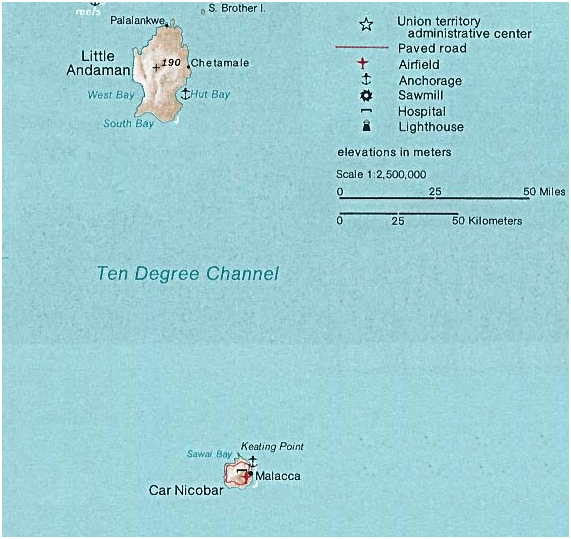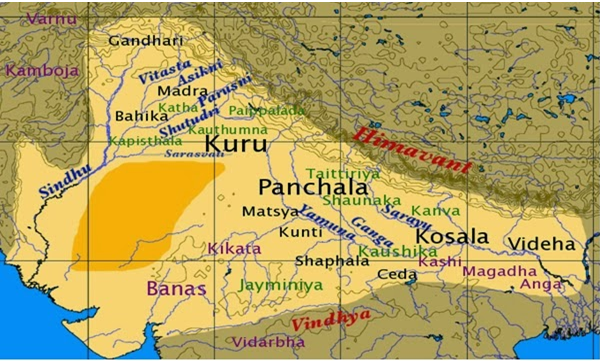This article will give you excellent tips on how to integrate maps into your learning strategy to tackle questions related to Geography. The questions are never straight-forward, UPSC will check your ability to interconnect topics, and this article will help you in understanding the importance of maps while answering questions in UPSC Exam.
Geography is not everyone cup of tea to speak, but a future civil servant, especially the ones who will be either in the Forestry or Foreign services need to brush up their geography for obvious reasons.
Aspirants would find this article very helpful while preparing for the IAS Exam.
| Aspirants should begin their preparation by solving UPSC Previous Year Question Papers now!!
To complement your preparation for the upcoming exam, check the following links: |
Maps have an important role in UPSC IAS Prelims, mains and in the interview as well. One should know how many countries are there, where they are located, how many continents are there etc.

Everybody might be familiar with the Maps. a world map looks like this. But how many of you know the location of Baikal lake, South Korea, Papua new guinea? The Maps provide us in-depth information about the different countries, the political boundaries of countries, physical and geographical features of landform etc.
Physical Geography
Without Maps, one cannot study physical geography. Physical Geography is a branch of Geography and Earth Sciences, which is considered the largest study field. It elaborates the spatial characteristics of the different natural phenomena combined with the Earth’s biosphere, hydrosphere, lithosphere, and atmosphere. The physical maps help us to understand topics like vegetation, climate, ocean currents, mountains, rivers, etc.

UPSC Previous year Question 2013
Which one of the following pairs is correctly matched?
Geographical Feature Region
(a) Abyssinian Plateau: Arabia
(b) Atlas Mountains: North-Western Africa
(c) Guiana Highlands: South-Western Africa
(d) Okavango Basin: Patagonia
Answer: B
Also, read | Geography and International Relations through Maps – UPSC Exam 2016-17
Human Geography
The Human geography is a subdiscipline of social sciences. It deals with the study of people and cultures, communities economies etc. to study and understand these perspectives we need maps. It gives us a clear idea about where it is located, the capital cities, important cities, transport connectivity, waterways, mineral deposits etc.

UPSC Previous year question 2014
Which one of the following pairs of islands is separated from each other by the ‘Ten Degree Channel’?
- Andaman and Nicobar
- Nicobar and Sumatra
- Maldives and Lakshadweep
- Sumatra and Java
Answer: A
Watch Video | IAS Preparation – Current Affairs: Revising Geography and International Relations through Maps
History
Maps make history easy. To study India’s civilization, history, ancient places, locations of archaeological excavations, and important cultural places, maps can be used. To study world history also maps can be used.
Read more | How to Study History for IAS

Infrastructure
The maps can also help you to study the various national initiatives like Golden Quadrilateral highway network, river interlinking projects etc. In General Studies Papers one can cite the places by drawing maps. This will fetch you a higher score.
Read more | Geography Syllabus and Strategies for IAS Prelims Examination

UPSC Previous year question 2014
Consider the following pairs:
| National Highway | Cities connected |
| 1. NH 4 | Chennai and Hyderabad |
| 2. NH 6 | Mumbai and Kolkata |
| 3. NH 15 | Ahmedabad and Jodhpur |
Which of the above pairs is/are correctly matched?
- 1 and 2 only
- 3 only
- 1, 2 and 3
- None
Answer: D
International Relations
The maps also help to enhance your UPSC IAS Mains exam preparation, especially for General studies Paper II. They are handy while studying international relations. Many new developments and projects can be understood clearly when studied in picture form.
In the IAS mains exam UPSC has asked some questions like this:
1. What do you understand by ‘The String of Pearls’ How does it impact India? Briefly, outlines the steps taken by India to counter this.
To answer this question you need to know what is The String of Pearls’, which all countries are involved in it etc.

2. In 2012, the longitudinal marking for high-risk areas for piracy was moved from 65 degrees east to 78 degrees east in the Arabian Sea by the International Maritime Organization. What impact does this have on India’s maritime security concerns?
Without knowing 65 degrees east to 78 degrees, meridian, and longitude, you cannot answer these kinds of questions.
Previous Years UPSC Prelims Geography Questions (2015-2020)
Below we will give questions from previous years UPSC Prelims Geography along with the corresponding solutions:
UPSC Prelims Geography Question 2015
1. In the South Atlantic and South-Eastern Pacific regions in tropical latitudes, cyclones do not originate. What is the reason?
(a) Sea surface temperatures are low
(b) Inter-tropical Convergence Zone seldom occurs
(c) Coriolis force is too weak
(d) Absence of land in those regions
Ans: a
UPSC Prelims Geography Questions 2016
1. Which of the following is/are tributary/ tributaries of Brahmaputra?
Dibang
Kameng
Lohit
Select the correct answer using the code given below.
(a) 1 only
(b) 2 and 3 only
(c) 1 and 3 only
(d) 1, 2 and 3
Ans: d
UPSC Prelims Geography Questions 2017
1. The Mediterranean Sea is a border of which of the following countries?
Jordan
Iraq
Lebanon
Syria
Select the correct answer using the code given below:
(a) 1, 2 and 3
(b) 2 and 3 only
(c) 3 and 4 only
(d) 1, 3 and 4 only
And: c
UPSC Prelims Geography Questions 2018
1. With reference to the Genetically Modified mustard (GM mustard) developed in India, consider the following statements :
GM mustard has the genes of a soil bacterium that give the plant the property of pest-resistance to a wide variety of pests.
GM mustard has the genes that allow the plant cross-pollination and hybridization.
GM mustard has been developed jointly by the IARI and Punjab Agricultural University.
Which of the statements given above is/are correct?
(a) 1 and 3 only
(b) 2 only
(c) 2 and 3 only
(d) 1, 2 and 3
Ans: b
UPSC Prelims Geography Questions 2019
Among the following, which one is the largest exporter of rice in the world in the last five years?
(a) China
(b) India
(c) Myanmar
(d) Vietnam
Ans: b
UPSC Prelims Geography Questions 2020
According to India’s National Policy on Biofuels, which of the following can be used as raw materials for the production of biofuels?
(a)Cassava
(b)Damaged wheat grains
(c)Groundnut seeds
(d)Horse gram
(e)Rotten potatoes
(f)Sugar beet
Ans: a
The above details would help candidates prepare for UPSC 2021.
Related Links
| IAS Salary | UPSC Syllabus |
| First High Court in India | Largest Mountain in India |
| Megalith | CAG of India 2021 |
| Rani Laxmibai | National Payments Corporation of India |

Comments